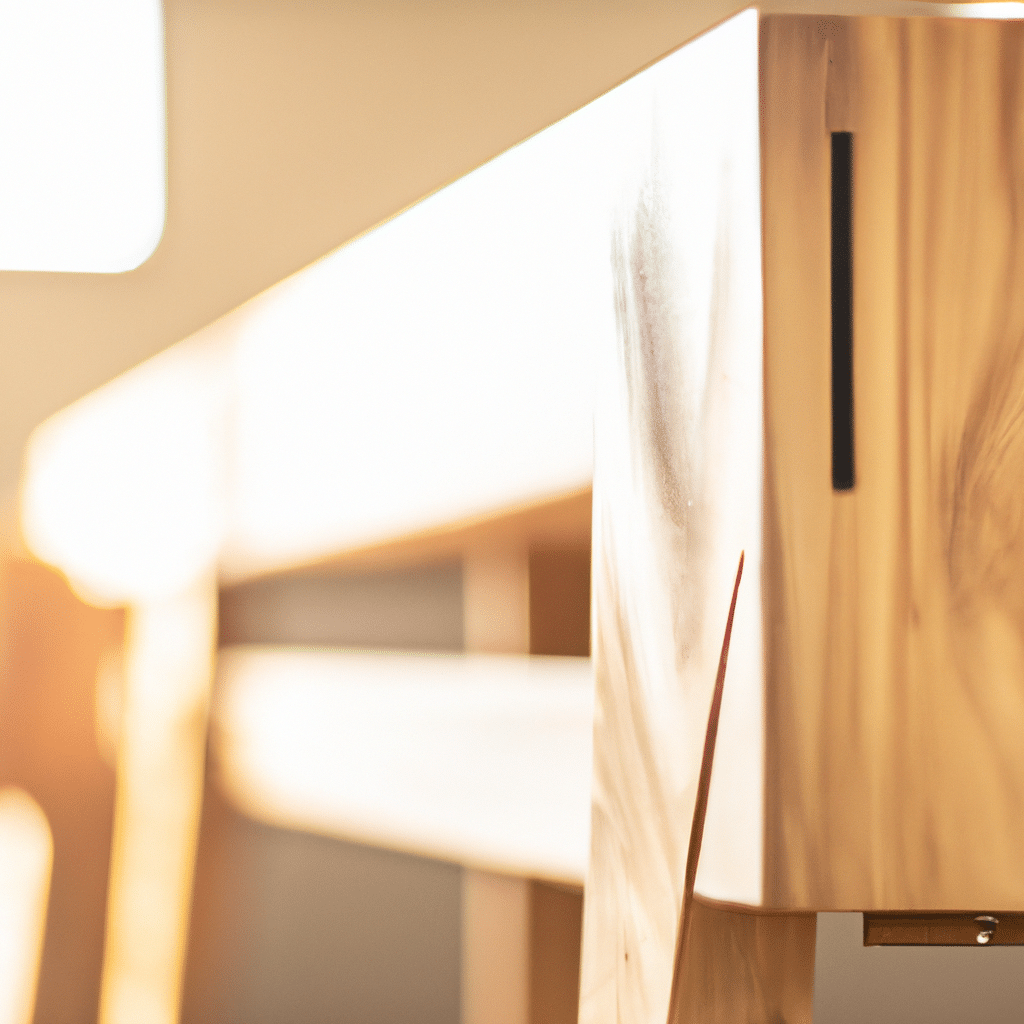In today’s fast-paced world, technology is constantly evolving and transforming various industries. The furniture industry is no exception, and it is witnessing a revolution with the emergence of cutting-edge technologies that are shaping the future of real wood furniture. These advancements not only enhance the manufacturing process but also offer new and exciting possibilities for design, customization, and sustainability. In this article, we will delve into the world of real wood furniture and explore the innovative technologies that are propelling it into the future.

1. Automated Woodworking Systems: Precision and Efficiency Unleashed
Traditional woodworking techniques have long been revered for their craftsmanship and attention to detail. However, the introduction of automated woodworking systems has revolutionized the industry by combining the precision of machines with the skill of artisans. These systems utilize computer numerical control (CNC) technology to streamline the manufacturing process, resulting in greater efficiency and accuracy.
With automated woodworking systems, intricate designs and complex joinery can be achieved with ease. The machines can precisely cut, shape, and carve wood, allowing for the creation of intricate patterns and unique furniture pieces. This technology not only saves time but also enables furniture makers to unleash their creativity and push the boundaries of design.
2. 3D Printing in Wood: Redefining Possibilities
3D printing has made significant strides in various industries, and now it is making its mark in the world of real wood furniture. 3D printing in wood involves using specially formulated wood-based filaments that can be layered and shaped to create three-dimensional objects. This technology opens up a world of possibilities for designers, as they can experiment with complex geometries and create intricate furniture pieces that were previously unimaginable.
The advantages of 3D printing in wood extend beyond design freedom. It also allows for more sustainable manufacturing practices, as it reduces waste by only using the necessary amount of material. Additionally, 3D printing in wood can utilize reclaimed or recycled wood, further promoting environmental consciousness within the industry.
3. Smart Furniture: The Intersection of Technology and Functionality
In the age of smart homes and connected devices, furniture is not far behind in embracing technology. Smart furniture integrates cutting-edge technologies to enhance functionality and provide an elevated user experience. From wireless charging capabilities to built-in sensors, these innovative pieces of furniture cater to the needs of modern living.
Imagine a dining table that automatically adjusts its height based on the user’s preference or a desk that monitors your posture and reminds you to take breaks. These are just a few examples of how smart furniture is transforming our living spaces. As technology continues to advance, we can expect even more exciting features to be incorporated into our everyday furniture.
4. Virtual Reality for Design and Customization
Gone are the days of flipping through catalogs or visiting multiple stores to find the perfect piece of furniture. Virtual reality (VR) has emerged as a game-changer in the furniture industry, allowing customers to visualize and customize furniture in a virtual environment. With VR technology, users can explore different design options, experiment with colors and textures, and even see how the furniture would fit into their own space.
This level of customization not only enhances the buying experience but also minimizes the chances of dissatisfaction with the final product. Customers can make informed decisions and have a clear understanding of how the furniture will look in their homes before making a purchase. VR technology brings convenience and confidence to the furniture-buying process.
5. Sustainable Materials and Practices: Towards a Greener Future
As environmental concerns continue to grow, the furniture industry is embracing sustainable materials and practices. From responsibly sourced wood to eco-friendly finishes, manufacturers are prioritizing sustainability throughout the production process. Additionally, innovative technologies, such as laser cutting and water-based adhesives, are minimizing waste and reducing the environmental impact of furniture manufacturing.
With a shift towards sustainable materials and practices, real wood furniture is becoming an eco-conscious choice for consumers. By opting for furniture made from renewable resources and manufactured using environmentally friendly methods, individuals can contribute to a greener future.
6. Augmented Reality for Enhanced Shopping Experiences
In the realm of online shopping, augmented reality (AR) is revolutionizing the way customers interact with furniture. AR technology enables users to visualize furniture pieces in their own space through the use of smartphone or tablet cameras. This immersive experience allows customers to see how the furniture would look and fit in their homes before making a purchase.
By bridging the gap between the physical and digital worlds, AR enhances the online shopping experience and minimizes the uncertainty associated with buying furniture online. Customers can confidently select furniture that aligns with their style and requirements, eliminating the need for guesswork and potential disappointment.
Conclusion
The future of real wood furniture is undeniably intertwined with cutting-edge technologies. Automated woodworking systems, 3D printing in wood, smart furniture, virtual reality for design and customization, sustainable materials and practices, and augmented reality for enhanced shopping experiences are just a few examples of the technological advancements shaping the industry.
As these technologies continue to evolve and become more accessible, they will undoubtedly pave the way for innovative designs, increased customization options, improved efficiency, and a greener future. By embracing these technologies, the real wood furniture industry can stay ahead of the curve and cater to the ever-changing demands of consumers.
In conclusion, the future of real wood furniture is bright, thanks to the relentless pursuit of technological advancements and a commitment to sustainability. As we look ahead, we can expect to see even more exciting developments that will further enhance the beauty, functionality, and environmental consciousness of real wood furniture.








